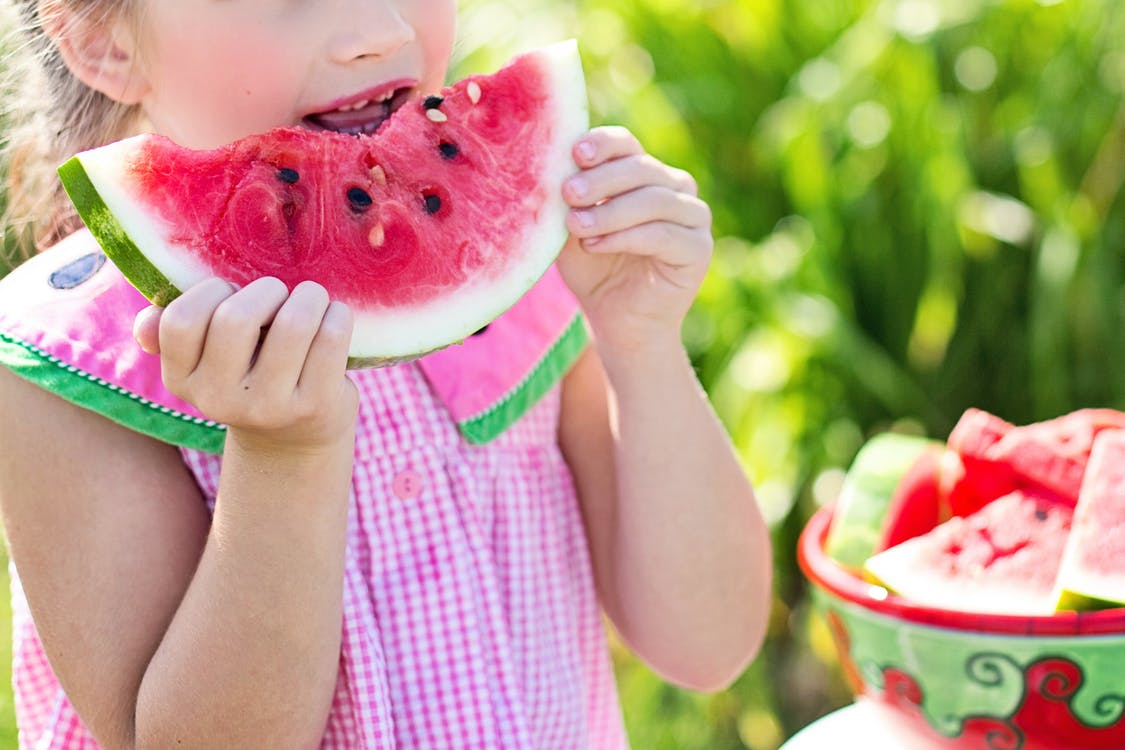By Alise Robers, Recent ASU Nutrition Student
Getting little ones to try new foods, or eat what you put in front of them can be a challenge. Some children won’t eat things just because they look ‘gross,’ while others put everything in sight (including non-food items) in their mouths. Kids have been known to refuse food because the color is not to their liking, different foods are touching or mixed together, or because it smells weird.

Several nutritionists and food experts suggest a variety of ways to help your kids eat healthily. Make your life a little easier and keep these 15 tips in mind the next time you are planning a meal for your child:
- Offer simply prepared foods. This means avoiding casseroles or any food that is mixed together. Children need to be able to identify what they are eating and some may not want their foods to touch on the plate at all.
- Offering choices is a great way to make them feel a sense of control over what they are eating. Offer 2 or 3 healthy choices to choose from, stay away from junk foods. This is giving the child the sense of the independence they want to have while still keeping you in control of nutrition.
- Children learn new foods by being presented with them over and over again. Put a small amount of a new food along with your meal but don’t require the child to eat it if he/she doesn’t want to. The more times this is done, the more likely they will be to eventually try the food.
- Provide at least one colorful food at every meal (such as carrots or broccoli).
- Avoid strong flavored foods and foods high in salt. These will taste too strong due to the higher amount of taste buds children have compared to adults.
- Let them make their own plate. Provide them with a variety of healthy foods and let him/her decide what and how much they want. Letting them take control of what goes onto their plate lets them exercise independence and they may be more willing to try new healthy foods if they are not being forced into it.
- Try providing one soft or moist food at each meal that is easy to chew. Developing their chewing skills is important, so a crisp or chewy food is important too.
- Don’t make snacking a habit. It’s easy to give them a bag full of pretzels when they say they are hungry but this can lead to bad habits. A random snack runs the risk of encroaching on the next mealtime causing them to not be hungry for the healthy meal you had planned.
- Carbohydrates are always a crowd pleaser because they are easy to hold and chew. Whole grains are the best route to go!
- Lumps are usually a no-go. Try a smoothly textured food such as soup or mashed potatoes.
- Include your child in the cooking process. If they get a sneak peek to the behind the scenes of dinnertime then they are more likely to try a new food. While you’re letting them help you is a great opportunity to talk about the nutritional value of the food your making.
- Be aware of the temperature of the food you’re serving. Children’s mouths are very sensitive to hot and cold. Try warm food, not hot.
- Planned, healthy snacks are important. Cutting up fruits and vegetables is a good and nutritious way to go. For added flavor let them spread on some peanut or almond butter. Or let them use a spoon to eat yogurt.
- Make sure your child is getting the nutrients they need. Children are most likely to be lacking in fiber, vitamin D, iron, and calcium.1
- Lead by example. Children pay a lot more attention to what you’re doing than you may realize. Keep in mind that your approach to healthy foods can influence your child’s attitude towards them!
For more fun and informative article check out the Fill Your Plate blog. New articles are posted every Monday, Wednesday, and Friday.
References:
- Brooks, Ashley. “Rasmussen College.” Rasmussen College- Regionally Accredited College and on Campus. N.p., n.d. Web. 2017. http://www.rasmussen.edu/degrees/education/blog/how-to-get-kids-to-eat-healthy/
- Drummond, Karen E, and Lisa M. Brefere. Nutrition for Foodservice and Culinary Professionals. 8th Hoboken, NJ: John Wiley & Sons, Inc., 2010. 388-389. Print.
- “Strategies for Feeding a Preschooler.” Ed. Mary L. Gavin. The Nemours Foundation, Nov. 2014. Web. 2017. http://kidshealth.org/en/parents/feed-preschooler.html

